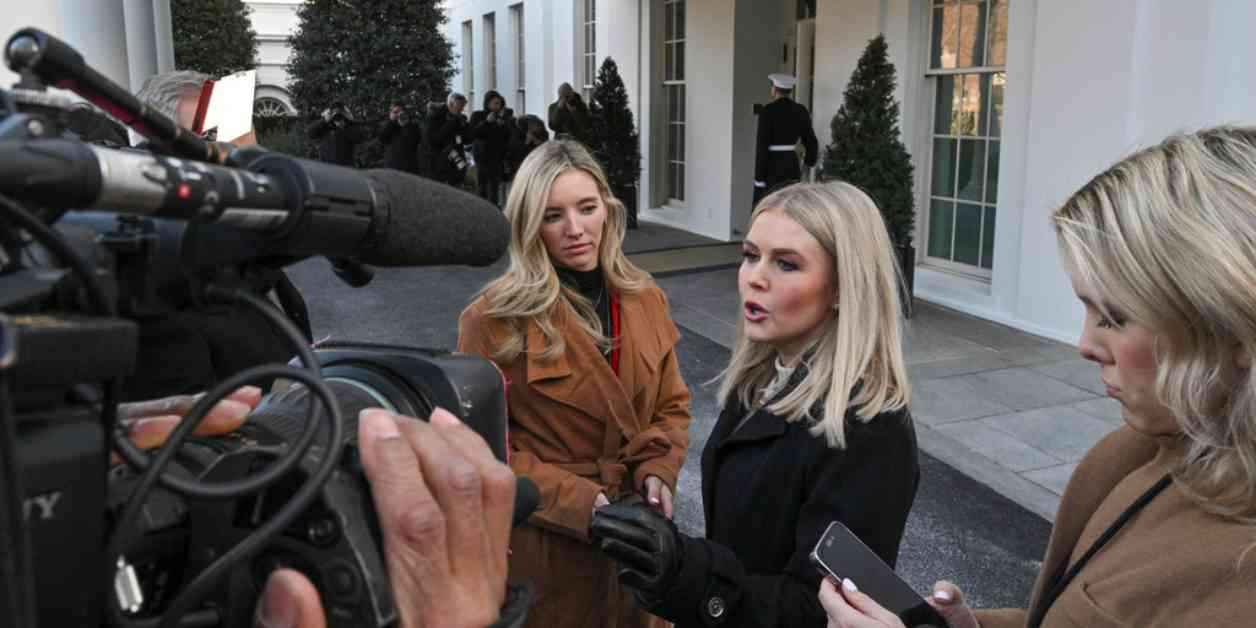White House Press Secretary Revolutionizes Media Landscape
At the dawn of a new era, the Trump administration’s inaugural White House press conference ushered in a wave of change under the helm of White House Press Secretary Karoline Leavitt. In a bold and unprecedented move, Leavitt unveiled a groundbreaking initiative designed to redefine the traditional media landscape, welcoming a diverse array of voices into the hallowed halls of the briefing room.
Embracing President Trump’s innovative media strategy, Leavitt declared that the White House would no longer be restricted to the confines of legacy media outlets. Instead, the administration would engage with a broader spectrum of media personalities, including podcast hosts, social media influencers, and independent journalists. This revolutionary shift aimed to align the White House with the evolving media preferences of the American public, particularly the younger generation who increasingly turn to alternative sources for news.
Restoring the press passes of 440 journalists whose credentials were revoked by the previous administration was the first step in this transformative journey. Leavitt’s commitment to inclusivity extended further, as she announced plans to open the briefing room to new media voices that had previously been excluded. Independent journalists, podcasters, and content creators were encouraged to apply for credentials through the White House’s website, marking a historic moment of democratization in the realm of political journalism.
Embracing Diversity in the Media Landscape
As the youngest White House press secretary in U.S. history, Leavitt embodied the spirit of change and inclusivity that defined the administration’s media reformation. She recognized the power of new media platforms in shaping public discourse and sought to harness that influence to amplify President Trump’s message. By inviting a diverse array of voices to the forefront of the briefing room, Leavitt aimed to bridge the gap between the administration and the American people, ensuring that no voice went unheard in the corridors of power.
The symbolic gesture of naming the front seat in the briefing room the “new media seat” underscored the administration’s commitment to embracing innovation and diversity in media representation. This seat, reserved for eligible new media applicants who met the criteria, served as a physical manifestation of the administration’s dedication to fostering a vibrant and inclusive media ecosystem.
In her closing remarks, Leavitt reiterated the importance of adapting to the changing media landscape and reaching audiences through multiple platforms. As she fielded questions from a diverse array of journalists, including those from Axios and Breitbart, Leavitt exemplified the administration’s commitment to engaging with all voices, regardless of their background or affiliation. The White House press briefing had evolved into a forum where traditional and new media intersected, creating a dynamic exchange of ideas and perspectives that reflected the diversity of the American media landscape.
As the press conference concluded, the historic nature of Leavitt’s announcement reverberated throughout the media landscape, signaling a new chapter in the relationship between the White House and the press. The seeds of change had been planted, and the future of media engagement in the political sphere had been forever altered by Leavitt’s visionary leadership. With a renewed sense of purpose and inclusivity, the White House press briefing room stood as a beacon of hope for a media landscape that embraced diversity, innovation, and the power of all voices to shape the national conversation.


